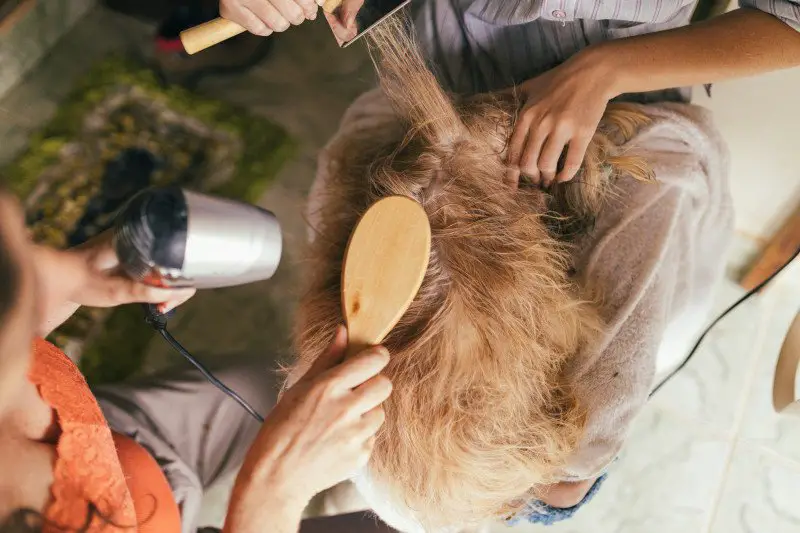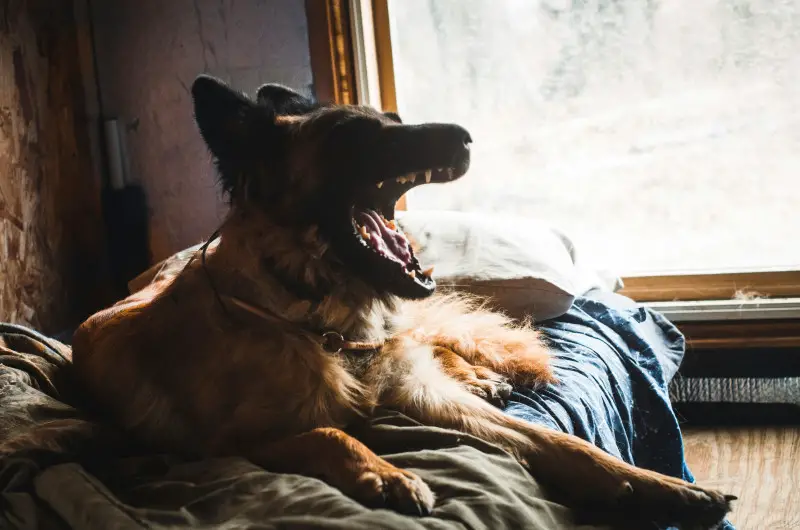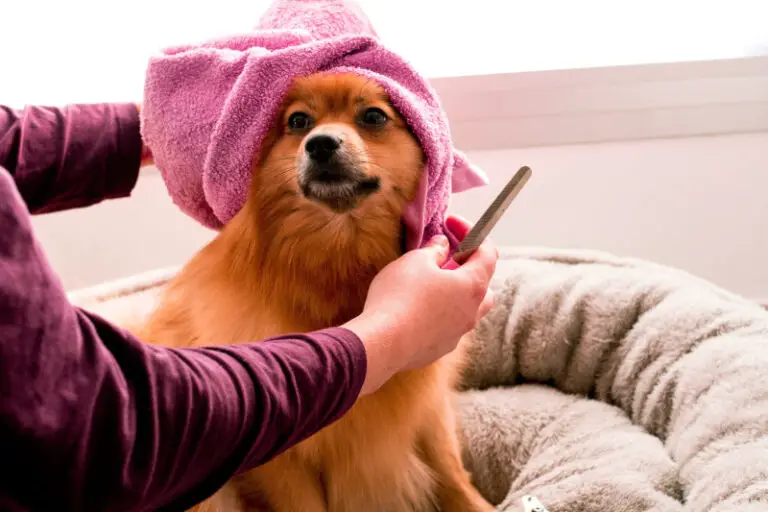Dog shedding is a common issue that many pet owners face, often leading to frustration and a seemingly endless battle with pet hair around the home. Shedding is a natural process for dogs, as it helps them get rid of old or damaged fur. However, excessive dog shedding can be a sign of underlying health issues or improper grooming practices. Understanding the causes and implementing effective grooming techniques can significantly reduce the amount of fur your dog sheds, making life more comfortable for both you and your furry friend. Proper grooming plays a crucial role in managing dog shedding. Regular grooming not only helps to remove loose fur but also promotes a healthy coat and skin. It can prevent matting, reduce allergens, and even strengthen the bond between you and your pet. By incorporating a few simple grooming tips into your routine, you can keep your dog’s coat in top condition and minimize the amount of hair that ends up on your furniture and floors. In this guide, we will delve into actionable grooming tips that can help you manage your dog’s shedding effectively. From understanding the shedding cycle to choosing the right tools and techniques, you’ll find practical advice to keep your dog’s coat healthy and your home cleaner. For more detailed grooming advice, you can also check out our comprehensive guide on dog shedding. Whether you’re dealing with seasonal shedding or year-round fur loss, these tips will equip you with the knowledge you need to tackle the issue head-on.
Table of Contents
Understanding Dog Shedding
Explain the Natural Shedding Process in Dogs
Shedding is a natural and essential process for dogs, allowing them to remove old or damaged fur and make way for new growth. This process varies significantly between different breeds and can be influenced by several factors, including genetics, health, and environment.
Differences Between Breeds
Different breeds have varying shedding patterns. For instance, double-coated breeds like Siberian Huskies and Golden Retrievers tend to shed more heavily, especially during seasonal changes. On the other hand, breeds like Poodles and Bichon Frises are known for their minimal shedding. Understanding your dog’s breed-specific shedding tendencies can help you better manage their coat maintenance.
Seasonal Shedding Cycles
Many dogs experience seasonal shedding, often referred to as “blowing coat.” This typically occurs in the spring and fall when dogs shed their winter or summer coats to adapt to changing temperatures. During these periods, you may notice an increase in pet hair loss around your home. Regular grooming during these times can help manage the excess fur and keep your dog’s coat healthy.
Health Considerations
Excessive dog shedding can sometimes be a sign of underlying health issues. Conditions such as allergies, hormonal imbalances, and skin infections can lead to increased shedding. If you notice sudden or severe changes in your dog’s shedding patterns, it’s essential to consult with a veterinarian to rule out any health concerns. Regular check-ups and a balanced diet can contribute to overall coat health and reduce excessive shedding.
Identify the Role of Diet in Controlling Shedding
A dog’s diet plays a crucial role in the health of their coat and skin. Providing nutrient-rich foods and supplements can significantly impact the amount of shedding and the overall quality of your dog’s fur.
Nutrient-Rich Foods
Feeding your dog a balanced diet that includes high-quality proteins, healthy fats, and essential vitamins and minerals is vital for maintaining a healthy coat. Omega-3 and Omega-6 fatty acids, found in fish oil and flaxseed, are particularly beneficial for skin and coat health. These nutrients help reduce inflammation, promote a shiny coat, and minimize shedding.
Supplements and Their Benefits
In addition to a balanced diet, certain supplements can further support coat health and reduce shedding. Fish oil supplements, rich in Omega-3 fatty acids, can help improve skin hydration and reduce inflammation. Biotin and zinc supplements are also known to promote healthy skin and fur. Before introducing any new supplements, it’s advisable to consult with your veterinarian to ensure they are appropriate for your dog’s specific needs.
Hydration’s Impact on Coat Health
Proper hydration is essential for maintaining a healthy coat. Dehydration can lead to dry, brittle fur and increased shedding. Ensure your dog has access to fresh water at all times, and consider incorporating moisture-rich foods into their diet. Wet dog food or adding water to dry kibble can help increase your dog’s overall water intake, contributing to better coat health and reduced shedding.
Discuss the Environment’s Effect on Shedding
The environment in which your dog lives can also influence their shedding patterns. Factors such as indoor living conditions, temperature, and humidity levels can all play a role in the amount of fur your dog sheds.
Indoor vs. Outdoor Living
Dogs that live primarily indoors may experience different shedding patterns compared to those that spend more time outside. Indoor dogs are often exposed to artificial lighting and controlled temperatures, which can disrupt their natural shedding cycles. Regular grooming and maintaining a consistent indoor environment can help manage shedding for indoor pets.
Temperature and Humidity
Temperature and humidity levels can significantly impact your dog’s shedding. In warmer climates, dogs may shed more to keep cool, while in colder environments, they may develop thicker coats and shed less. Maintaining a comfortable indoor temperature and using humidifiers during dry seasons can help manage your dog’s shedding. Additionally, regular grooming can help remove loose fur and prevent matting, regardless of the climate. By understanding the natural shedding process, the role of diet, and the impact of the environment, you can take proactive steps to manage your dog’s shedding effectively. Implementing these strategies will not only help reduce the amount of fur in your home but also contribute to your dog’s overall health and well-being.
Effective Grooming Techniques
Outline Basic Grooming Tools Needed
To effectively manage dog shedding, having the right grooming tools is essential. These tools not only help in removing loose fur but also contribute to overall dog coat maintenance and health.
Brushes and Combs
Different types of brushes and combs serve various purposes in the grooming process. Slicker brushes are excellent for removing loose fur and detangling mats, especially in long-haired breeds. Bristle brushes are ideal for short-haired dogs, helping to remove loose hair and distribute natural oils across the coat. Metal combs can be used to tackle tangles and ensure a thorough grooming session. Regular use of these tools can significantly reduce pet hair loss and keep your dog’s coat in top condition.
Clippers and Scissors
Clippers and scissors are essential for trimming and maintaining your dog’s coat. Clippers are particularly useful for breeds that require regular haircuts, such as Poodles and Schnauzers. Scissors can be used for more detailed trimming around sensitive areas like the face, paws, and tail. Investing in high-quality clippers and scissors ensures a smooth grooming experience and helps in managing excessive dog shedding.
Deshedding Tools
Deshedding tools are specifically designed to remove loose undercoat fur, which is often the primary cause of shedding. Tools like the Furminator are highly effective for breeds with thick undercoats, such as German Shepherds and Labrador Retrievers. These tools reach deep into the coat to remove loose fur without damaging the topcoat, making them an essential part of any dog shedding prevention routine.
Step-by-Step Guide to a Regular Grooming Routine
Establishing a regular grooming routine is crucial for managing dog shedding. The frequency and type of grooming will depend on your dog’s breed and shedding patterns.
Daily Brushing for High-Shedding Breeds
High-shedding breeds, such as Golden Retrievers and Siberian Huskies, benefit from daily brushing. This helps to remove loose fur before it ends up on your furniture and floors. Using a slicker brush or a deshedding tool can effectively manage canine fur shedding. Daily brushing also stimulates the skin and promotes the distribution of natural oils, contributing to a healthier coat.
Weekly Grooming for Moderate Shedders
For breeds that shed moderately, such as Beagles and Cocker Spaniels, weekly grooming is usually sufficient. A combination of brushing and combing can help manage dog hair removal and keep the coat in good condition. Regular grooming sessions also provide an opportunity to check for any skin issues or parasites, ensuring your dog’s overall health.
Monthly Maintenance for Low-Shedding Breeds
Low-shedding breeds, like Poodles and Bichon Frises, require less frequent grooming but still benefit from monthly maintenance. Regular trims and brushing help prevent matting and keep the coat looking its best. Even though these breeds shed less, they still need proper dog coat maintenance to stay healthy and comfortable.
Tips for Effective Bathing Practices
Bathing is an essential part of the grooming routine, helping to remove dirt, debris, and loose fur. However, it’s important to follow best practices to ensure your dog’s skin and coat remain healthy.
Choosing the Right Shampoo
Selecting the right shampoo is crucial for effective dog fur control. Opt for a shampoo that is specifically formulated for dogs, as human shampoos can be too harsh and cause skin irritation. For dogs with sensitive skin or allergies, hypoallergenic or oatmeal-based shampoos are excellent choices. Medicated shampoos can also be used for dogs with specific skin conditions, but it’s best to consult your veterinarian before using them.
Bathing Frequency Recommendations
The frequency of bathing depends on your dog’s breed, coat type, and lifestyle. Generally, dogs should be bathed every 4-6 weeks. However, dogs that spend a lot of time outdoors or have skin conditions may require more frequent baths. Over-bathing can strip the coat of natural oils, leading to dry skin and increased shedding, so it’s important to find a balance that works for your dog.
Drying and Post-Bath Grooming

Proper drying is essential to prevent matting and skin issues. Towel-dry your dog thoroughly and use a blow dryer on a low heat setting if your dog is comfortable with it. After drying, a thorough brushing session helps remove any remaining loose fur and keeps the coat looking its best. Regular post-bath grooming can also help in dog shedding prevention by ensuring that the coat remains free of tangles and mats. By incorporating these effective grooming techniques into your routine, you can significantly reduce dog shedding and maintain a healthy, beautiful coat for your furry friend. Regular grooming not only helps in dog hair management but also strengthens the bond between you and your pet, making the grooming process a positive experience for both of you.
Advanced Shedding Control Measures
Professional Grooming Services
While regular at-home grooming is essential, professional grooming services can provide an extra layer of care and expertise in managing dog shedding. Professional groomers have access to specialized tools and techniques that can significantly reduce shedding and improve your dog’s coat health.
Services Like Trimming and Deshedding Treatments
Professional groomers offer a range of services designed to manage and reduce shedding. Trimming and deshedding treatments are particularly effective for high-shedding breeds. Deshedding treatments often involve the use of specialized tools and products that reach deep into the coat to remove loose undercoat fur. These treatments can drastically reduce the amount of fur your dog sheds at home, making dog hair management much easier.
Benefits of Regular Professional Attention
Regular visits to a professional groomer can provide numerous benefits beyond just reducing shedding. Groomers are trained to spot potential health issues such as skin infections, parasites, and abnormal growths. Early detection of these issues can lead to prompt treatment and prevent more serious health problems. Additionally, professional grooming can enhance the overall appearance and health of your dog’s coat, making it shinier and more manageable.
Finding a Reputable Groomer
Finding a reputable groomer is crucial for ensuring your dog receives the best care. Look for groomers with positive reviews and recommendations from other pet owners. It’s also a good idea to visit the grooming facility beforehand to ensure it is clean and well-maintained. A reputable groomer will be happy to answer any questions you have and provide information about their services and techniques. Regular professional grooming can be an invaluable part of your dog shedding solutions.
Tools and Products to Minimize Shedding
In addition to professional grooming, there are various tools and products available that can help minimize shedding and keep your dog’s coat healthy.
Deshedding Sprays and Conditioners
Deshedding sprays and conditioners are formulated to reduce shedding by strengthening the hair follicles and moisturizing the skin. These products can be applied during regular grooming sessions to help manage pet hair loss. Deshedding sprays often contain ingredients like Omega-3 and Omega-6 fatty acids, which promote healthy skin and coat. Regular use of these products can make a noticeable difference in the amount of fur your dog sheds.
Anti-Shedding Shampoos and Supplements
Anti-shedding shampoos are specifically designed to reduce excessive dog shedding. These shampoos often contain ingredients like aloe vera, oatmeal, and essential oils that soothe the skin and reduce irritation. Using an anti-shedding shampoo during your dog’s bath can help remove loose fur and prevent future shedding. Additionally, supplements such as fish oil and biotin can support coat health from the inside out. These supplements provide essential nutrients that promote strong, healthy fur and reduce shedding.
Regularly Cleaning the Living Environment
Maintaining a clean living environment is essential for managing dog fur control. Regularly vacuuming and dusting can help remove loose fur from your home and reduce allergens. Using air purifiers can also help capture pet dander and improve indoor air quality. Additionally, washing your dog’s bedding and toys frequently can help minimize the amount of fur in your home. Keeping your living environment clean not only helps with dog hair removal but also contributes to a healthier space for both you and your pet.
Addressing Excessive Shedding
While shedding is a natural process, excessive shedding can be a sign of underlying issues that need to be addressed. Understanding the signs of abnormal shedding and knowing when to seek professional help is crucial for your dog’s health.
Signs of Abnormal Shedding
Excessive shedding can manifest in various ways, such as bald patches, thinning fur, or an increase in the amount of fur shed. Other signs to watch for include red or irritated skin, constant scratching, and the presence of sores or scabs. If you notice any of these symptoms, it’s essential to take action promptly. Abnormal shedding can be caused by factors such as allergies, hormonal imbalances, or skin infections, and addressing these issues early can prevent more serious health problems.
When to Consult a Veterinarian
If you suspect that your dog’s shedding is excessive or abnormal, it’s important to consult a veterinarian. A vet can perform a thorough examination and run tests to determine the underlying cause of the shedding. They can also provide recommendations for treatments and interventions to address the issue. Regular veterinary check-ups are essential for monitoring your dog’s overall health and catching any potential problems early.
Potential Treatments and Medical Interventions
Depending on the cause of the excessive shedding, your veterinarian may recommend various treatments and interventions. For example, if allergies are the culprit, your vet may suggest dietary changes, allergy medications, or topical treatments to soothe the skin. Hormonal imbalances may require hormone therapy or other medications to regulate your dog’s system. In cases of skin infections, antibiotics or antifungal treatments may be necessary. Following your veterinarian’s recommendations and maintaining regular check-ups can help manage excessive shedding and ensure your dog’s overall well-being. By incorporating advanced shedding control measures, you can effectively manage and reduce your dog’s shedding. Professional grooming services, specialized tools and products, and prompt attention to excessive shedding can all contribute to a healthier coat and a cleaner home. Understanding and addressing the factors that influence shedding will help you provide the best care for your furry friend and maintain a harmonious living environment.
Conclusion
Managing dog shedding is a multifaceted task that requires a combination of understanding the natural shedding process, implementing effective grooming techniques, and utilizing advanced shedding control measures. By gaining insight into the factors that influence shedding, such as breed differences, seasonal cycles, and health considerations, pet owners can take proactive steps to manage their dog’s coat more effectively. A balanced diet rich in essential nutrients, regular hydration, and a comfortable living environment also play crucial roles in maintaining a healthy coat and minimizing shedding. Proper grooming is the cornerstone of managing dog shedding. Utilizing the right grooming tools, such as brushes, combs, clippers, and deshedding tools, can make a significant difference in reducing pet hair loss. Establishing a regular grooming routine tailored to your dog’s specific needs—whether it involves daily brushing for high-shedding breeds, weekly grooming for moderate shedders, or monthly maintenance for low-shedding breeds—ensures that loose fur is removed before it becomes a problem. Effective bathing practices, including choosing the right shampoo and ensuring proper drying, further contribute to dog fur control and overall coat health. Advanced shedding control measures, such as professional grooming services and specialized products, offer additional support in managing excessive dog shedding. Professional groomers provide expert care and can identify potential health issues early on. Deshedding sprays, anti-shedding shampoos, and supplements can enhance the effectiveness of your grooming routine. Maintaining a clean living environment by regularly vacuuming, dusting, and washing your dog’s bedding also helps in dog hair removal and creates a healthier space for both you and your pet. Addressing signs of abnormal shedding promptly and consulting a veterinarian when necessary ensures that any underlying health issues are treated effectively. Encouraging readers to implement these outlined tips can lead to a cleaner, healthier home and a happier, more comfortable pet. By understanding the natural shedding process, investing in the right grooming tools, and utilizing advanced shedding control measures, pet owners can significantly reduce the amount of fur in their homes and improve their dog’s overall well-being. Regular grooming not only helps in dog shedding prevention but also strengthens the bond between you and your furry friend, making the grooming process a positive and enjoyable experience for both of you. Taking these steps will ensure that your dog’s coat remains healthy and beautiful, and your home stays cleaner and more comfortable.



